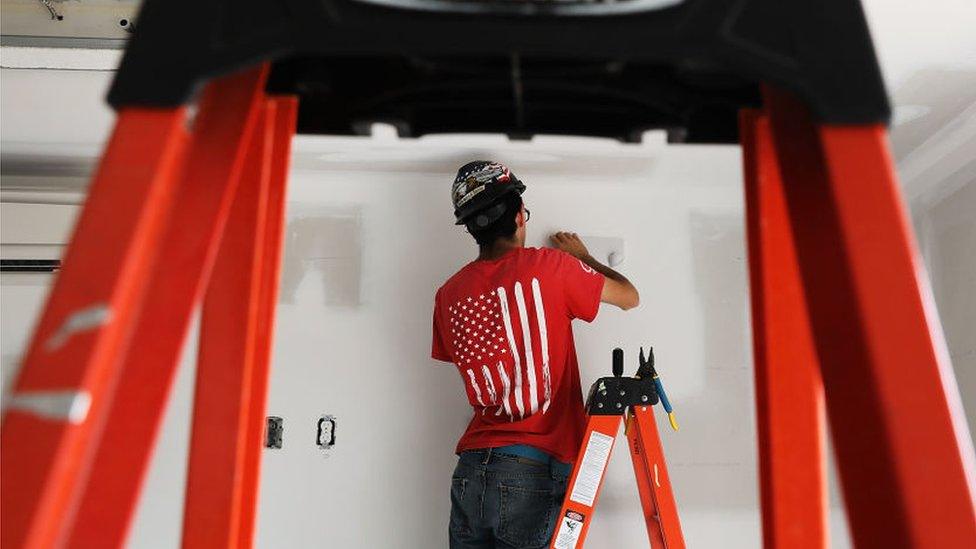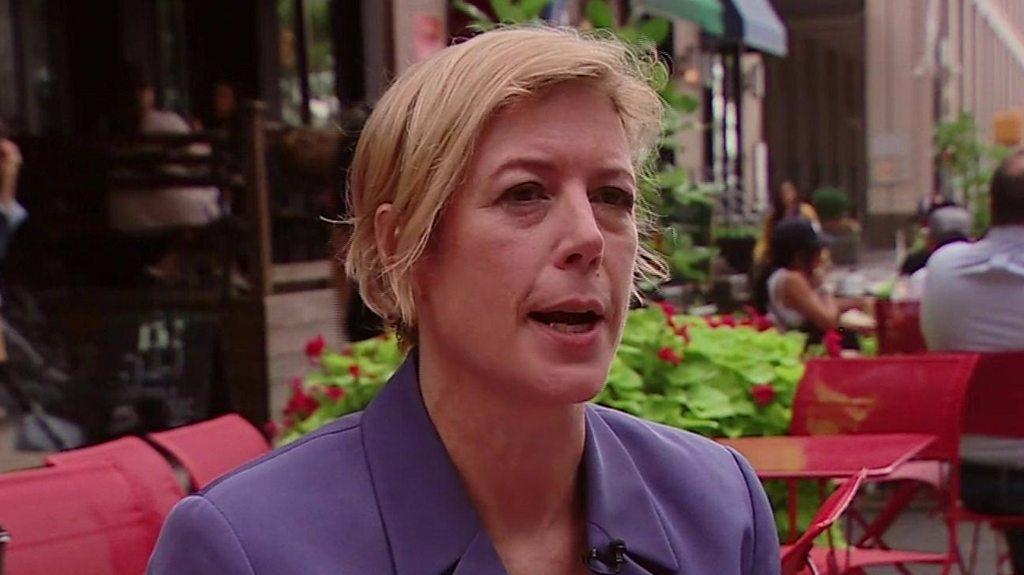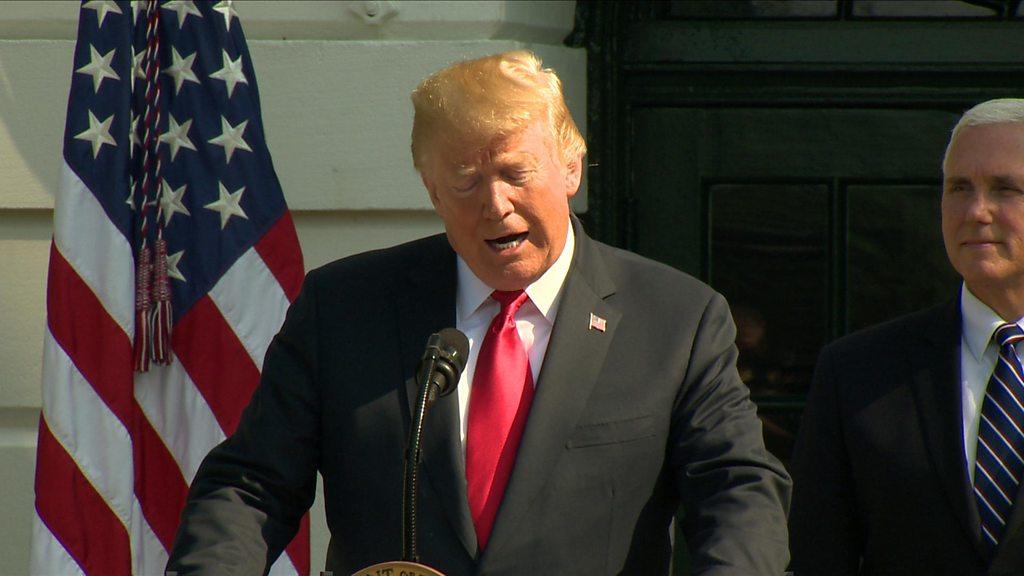US jobs growth slows by more than expected in July
- Published

The US economy added fewer jobs than expected in July after a surge of hiring in the previous months.
Employers added 157,000 jobs in July - 33,000 fewer than expected and well below the 248,000 created in June.
Economists had forecast that the number of jobs created would be close to 190,000 for the month.
The US Department of Labor also said the unemployment rate fell from 4.0% to 3.9% in July, near to the 18-year low it reached in May.
Manufacturers led the job gains in June - a sign that the intensifying trade disputes between the US and other countries are not yet hurting hiring, analysts said.
The healthcare and hospitality sectors also added positions, but there were marked losses at toy and game retailers, as chains such as Toys R US shuttered their doors.
Previous job gain estimates for May and June were revised upwardly, to 268,000 and 248,000 respectively.
Those revisions "take some of the sting out" of the unexpectedly low rise in July, said Mark Hamrick, senior economic analyst at Bankrate.com, which tracks interest rates.
Wage gains
The job figures follow data last week that showed the US economy grew at an annualised rate of 4.1% in the second quarter of the year.
They extend an uninterrupted streak of job growth that started in October 2010 and that has driven down the unemployment rate to levels last seen at the turn of the century.
The tightening labour market has also made it harder for employers to fill positions. There are close to 6.6 million unfilled jobs across the nation.
However wage gains have remained relatively modest.
The Department of Labor said average hourly earnings increased by 0.3% in July to $27.05, meaning they were up 2.7% from the same month last year.
The pace of year-on-year growth, however, slowed slightly from the prior months.
"It is clear that wage growth must increase," US Secretary of Labor Alexander Acosta said in a statement. "Further wage increases will add a great benefit to the American workforce."

Analysis
Paul Blake, US business reporter
It's far too early to tell if this dip is evidence that the "trade wars" between the US, China and other nations is starting to pinch the US economy.
Certainly over the long term, any disruptions to global supply chains could hurt jobs.
But this is just one number. Most economists pay attention to the three-month average of job growth, which sits now at 224,000, a healthy number suggesting a solid US labour market.
The other key figure in the minds of the markets will be average hourly earnings growth, now at 2.7%, year-over-year, suggesting that wage inflation is not accelerating.
That is not likely to prevent the Fed from hiking rates in September, but it's likely to calm any market anxieties that the speed of rate increases could accelerate.

Rate rises
Ian Shepherdson, chief economist at Pantheon Economics, said the data was "better than it looks" as the core, three-month trend was of an additional 200,000 jobs a month.
He also predicted that the figures would not push the US Federal Reserve off its course of steady interest rate increases.
"Overall, these numbers won't change the Fed's plans; unless the data over the next few weeks take a sudden, serious turn for the worse, the Fed will hike again next month".
The Fed has already increased its base interest rate twice this year, following meetings in March and June, and it now sits at between 1.75%-2%.
- Published27 July 2018

- Published27 July 2018

- Published27 July 2018
